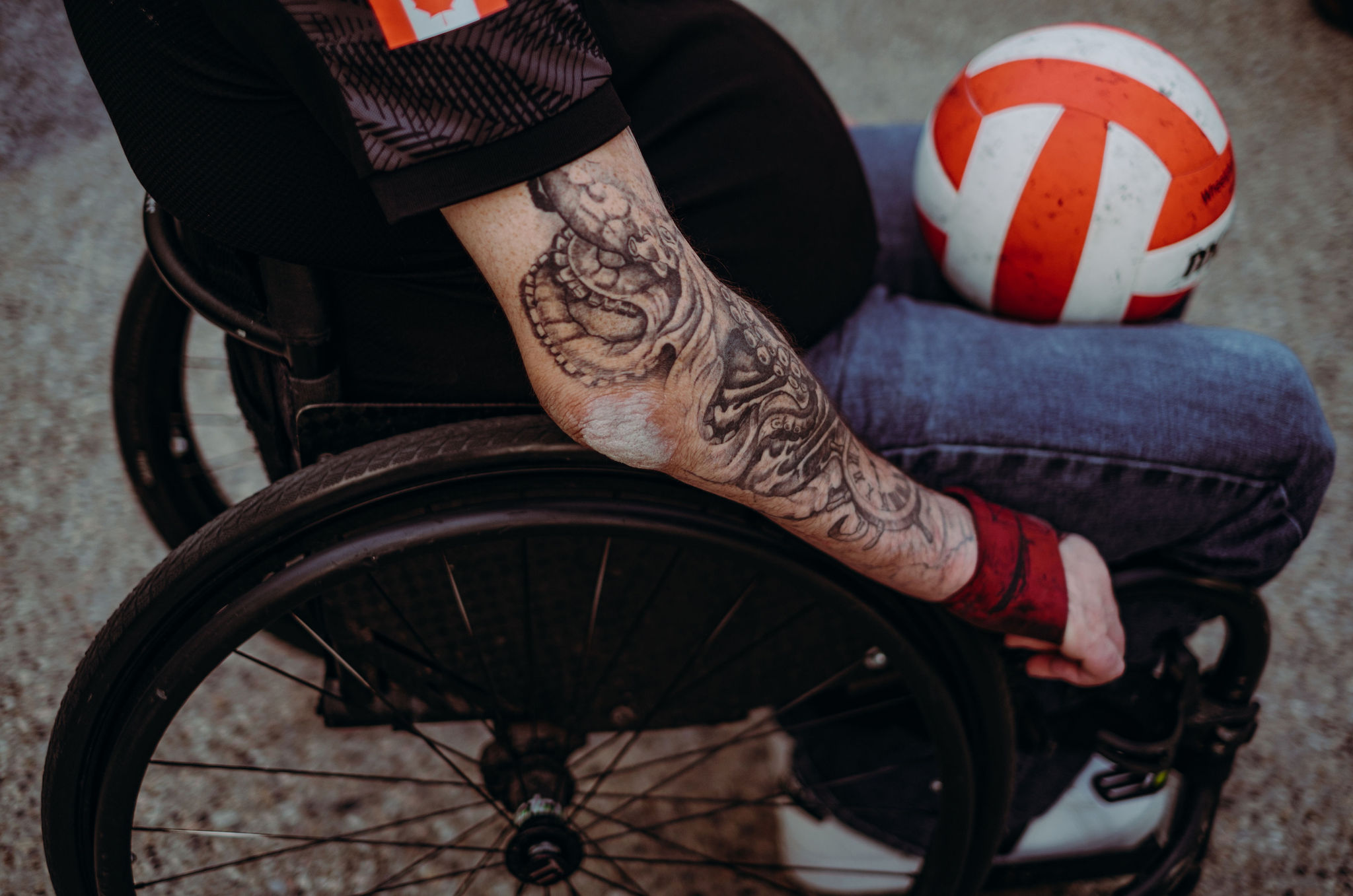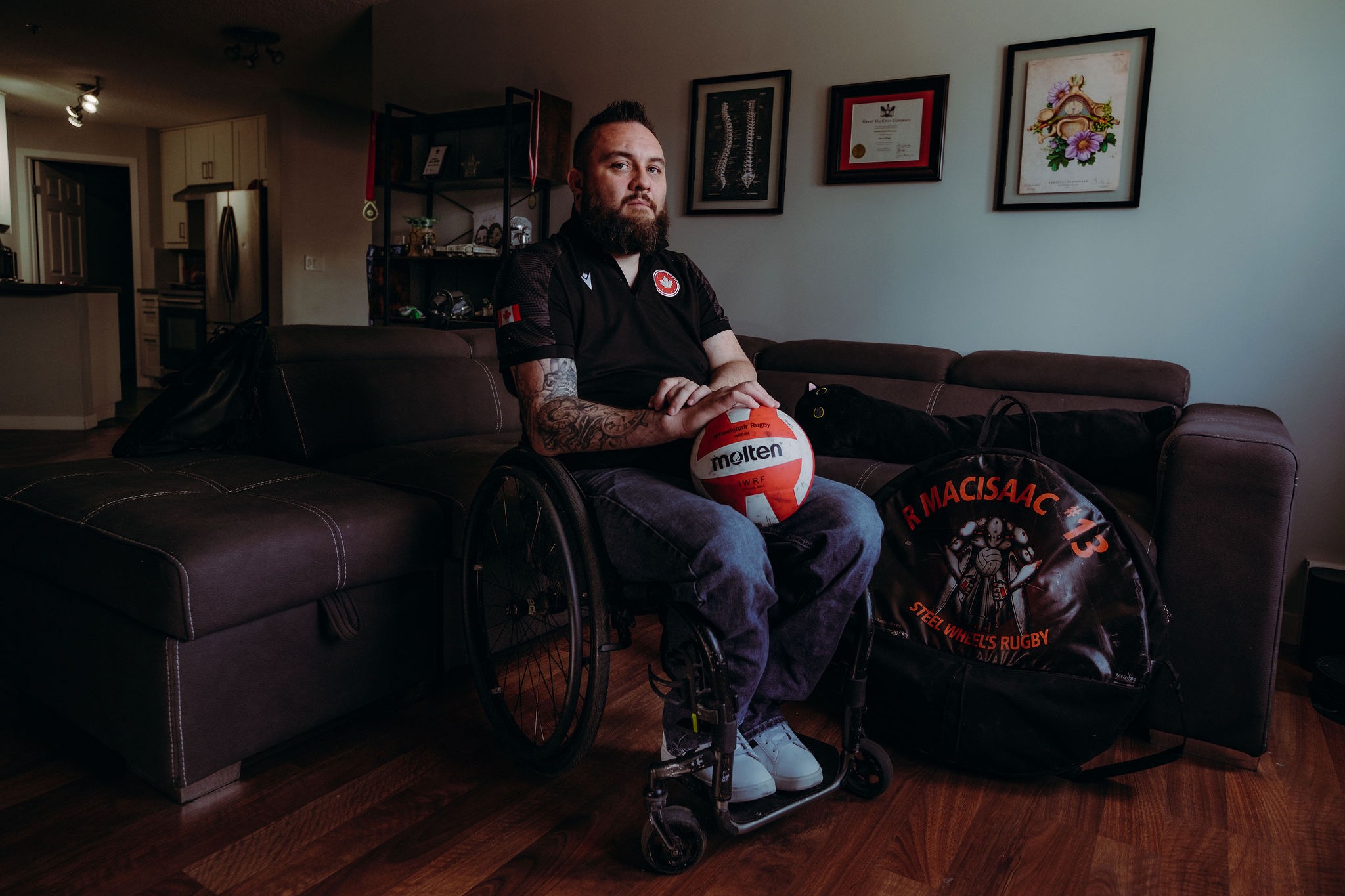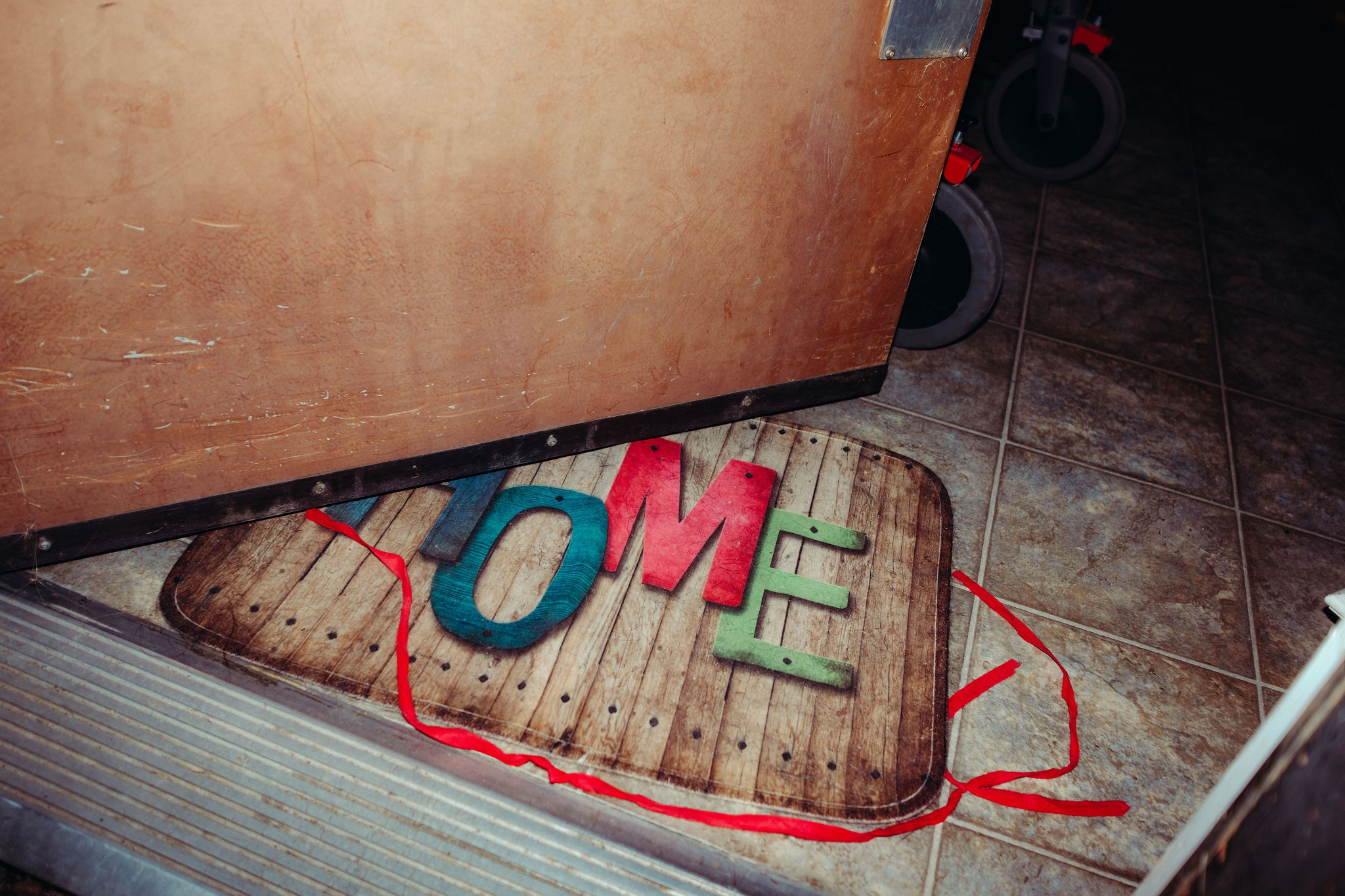This is one of 12 interviews conducted with various Edmontonians about their experience with the housing system. It has been edited for clarity and length. Read more about why and how Taproot embarked on this series.
Rob MacIsaac is the client services coordinator for Spinal Cord Injury Alberta, a non-profit society whose mission is "to empower persons with spinal cord injuries and other physical disabilities to achieve independence and full community participation." MacIsaac is a registered social worker who experienced a spinal cord injury in his late teenage years. He received his social work education and experience in Edmonton after moving here from Nova Scotia in 2014.
Can you tell us what role you play in the housing ecosystem now?
I work for a nonprofit organization where we help individuals after suffering a traumatic or non-traumatic spinal cord injury or similar physical disability. Our motto is "Adapt Adjust Thrive." So one of those pieces reintegrating back into the community is finding accessible housing, whether that is finding a private rental, helping individuals renovate, or getting into a housing co-op or similar.
Can you talk a little bit about how you got into this role?
I have lived experience with a spinal cord injury going on 20 years, from a motor vehicle accident when I was 18. I broke my neck and became a high-level quadriplegic. Even though I have a high-level injury, I have a high amount of physical function. So living the life of an individual that requires accessibility and accommodations, it really helped me to see the gaps in many areas, but specifically housing post-injury.
Can you tell us about your journey?
Being from a rural town in Nova Scotia at the time of my injury, we had to look at where I was going to go. My hometown was two hours away from the hospital. So for me, it took a year and a bit to be able to find an accessible place that suited my needs at the time, which was barrier-free access, roll-in shower, which are very few and far between. We found one in Halifax and I jumped on it. That's when really for me, my quality of life really started to elevate. I was working with other people like me. That's really where I knew this is what I wanted to do. You know, I want to work with these individuals. I want to see these individuals thrive. Want to see them become part of a community, even though they're going to be part of a marginalized community.
What kind of things helped you get over your injury?
You mean kind of navigate life again, right? One of the biggest motivating factors was that I got involved in sports, so I became an athlete. I was a bit of an athlete prior. I preferred more of the adrenaline junkie kind of stuff. But being introduced to sport post-injury…actually, I was kidnapped from the rehab. I was still in the neck collar at the time and I was thrown in a rugby chair. Wheelchair rugby. So that started my journey with integration into the community, right? The community with individuals with disabilities, and specifically with spinal cord injuries at these times and quadriplegics. The sport is designed specifically for individuals to have impairment in all three or four limbs. So that's what catapulted things for me. I met these individuals and saw what they could do. And not just in sport, but how much sport increased their quality of life overall. Big picture confidence, right?
What kind of barriers do you see and still experience?
Automatic door openers, working ones, functioning ones that are maintained right. It's not just having them. It's like are they maintained? I run into it a lot. There's big barriers with the width of door frames, a lot of chairs won't fit through doors. Next stop is the bathroom. It's always the next stop. Everything else is on the back burner. If we can't mobilize in the bathroom with the space, that's no good. Unfortunately, I've had clients that had to use their commode chairs in their living room. Just can't get in the bathroom with it. That's not OK, right? It almost feels a little bit inhumane. Everybody should have access to a freaking bathroom. How does that promote independence and confidence? It doesn't because you're going to be like, "Yeah, sorry, I'm going to use my bathroom in the living room. Can you please leave?" What's the word I'm looking for? Yeah, your dignity, your sense of dignity, your self-identity. A home provides so much for people. It's your safe space, it's your place to be proud of.
The general public, I find, has this idea that, hey, you have a disability, you get everything paid for. Not the case at all. Not by any means. You get some, but what you get is like AISH – that's capped at $1,780 a month. That's all you're capped at. So if you're looking for something that's affordable and accessible, if you can find it, you might find it in a not-so-great area. As a vulnerable person, you know you got to take that into consideration, too. Is it going to be safe to go get my groceries? I don't drive. So is it going to be safe to go to and from bus sites? Transit in general? What is that going to look like? Are there going to be neighbours that you know? Might not be the greatest. So there's this discrepancy there and just educating the general public that hey, No. 1, we don't get everything paid for, and even when there are appropriate things that we need, we still have to fight for them.

Rob MacIsaac credits wheelchair rugby for helping him cope with his disability. (Jordon Hon)
How would you describe the housing situation for disabled people now?
Oh, it's a disaster. It really, truly is. The new individuals that I'm working with that are currently in hospital, their barrier is to find an accessible home. And for people that are already in a place, say they're paying 1,000 bucks a month and it's going to go up $150, or there's no cap on what percentage they can increase the rent by, then it's putting a lot of people out, a lot of strain on those individuals. Most times when individuals with a disability are unfortunately of lower socioeconomic status, there's a lot more barriers,and so much more that they're fighting for. If it's catheter supplies or any kind of medical supplies, it can be challenging to get the appropriate equipment, because there's only so much funding, and it all intersects because they need that equipment to function within their home.
What would you say to people who aren't familiar with the challenges of individuals with disabilities?
There is a massive barrier for individuals with disabilities. I have a high degree of privilege within my community as a white male, educated, fully employed and still have those challenges, especially home-wise. You open up a world of possibilities for so many individuals and communities when you become physically inclusive and barrier-free. There's information out there to do that and what it looks like, it can be pretty. People think accessibility is ugly sometimes. Accessibility can be pretty. So yeah, there's always hoops and boundaries, but let's work together to minimize those pieces.
This interview was conducted on April 15, 2024. The photos were taken in September.


